TED演讲达人对演讲者的7条经验之谈
日期:2014-11-11 11:59
(单词翻译:单击)
This post is in partnership with Entrepreneur. The article below was originally published at Entrepreneur.com.
本文与《创业者》杂志(Entrepreneur)合作。下文最初发表于Entrepreneur.com。
你或许并不知道,西蒙•斯涅克天生腼腆,不喜欢在众人面前讲话。他说参加派对时自己总是独自躲在角落里,甚至不敢在这样的场合出现。通常情况下,他干脆就不去参加派对。如今,他的演讲视频已经获得2,200万次浏览量,这位乐观的人种志学者,由此成为观看次数排名第三的TED演讲者。
Ironic for an introvert, isn’t it? Sinek’s unlikely success as both an inspirational speaker and a bestselling author isn’t just dumb luck. It’s also not being in the right place at the right time or knowing the right people. It’s the result of fears faced and erased, trial and error and tireless practice, on and off stage.
对于一位内向的人来说,这难道不具有讽刺意味吗?然而,不论是作为一名励志演讲家还是畅销书作者,斯涅克的成功并非全靠运气。也不是来自他在正确的时间出现在正确的地点或者认识正确的人。他的成功源自他在台上台下无数次面对恐惧又战胜恐惧,反复试错,不知疲倦的练习。
我们采访了斯涅克,询问了他如何学会发表自信的、有魅力的、有意义的演说,以及其他人应该怎么做。以下是他给出的七条秘诀,这将帮助我们学会如何让演讲言之有物,动人心弦。
1. Don’t talk right away.
1. 不要一开场就滔滔不绝。
Sinek says you should never talk as you walk out on stage. “A lot of people start talking right away, and it’s out of nerves,” Sinek says. “That communicates a little bit of insecurity and fear.”
斯涅克表示,你不应该一走上台就开始说话。斯涅克说道:“许多人一上台便开始滔滔不绝,这往往是紧张所致。这种表现传达给听众的是不安全感和恐惧。”
相反,演讲者应该静静地走上讲台。然后深呼吸,找到自己的位置,等几秒钟之后再开始。斯涅克说道:“我知道这听起来很长,而且有些乏味。这样做时,你甚至会感觉到难以忍受的尴尬,但这却可以向听众展示,你非常自信,完全掌控着局面。”
2. Show up to give, not to take.
2. 只为给予,不求索取。
人们进行演示,通常是为了推销产品或服务,让人们在社交媒体上关注他们,买他们的书,或者单纯想博得人们的好感。斯涅克将这类演讲者称为“索取型”,他表示,听众一眼就能看穿这些人的目的。而一旦他们明白了演讲者的意图,他们就失去了聆听的兴趣。
“We are highly social animals,” says Sinek. “Even at a distance on stage, we can tell if you’re a giver or a taker, and people are more likely to trust a giver — a speaker that gives them value, that teaches them something new, that inspires them — than a taker.”
3. Make eye contact with audience members one by one.
3.与听众逐个进行眼神接触。
斯涅克说道,平移扫视是演讲者最大的敌人。“虽然你看上去是在关注所有人,但实际上却切断了你与听众之间的联系。”
It’s much easier and effective, he says, if you directly look at specific audience members throughout your speech. If you can, give each person that you intently look at an entire sentence or thought, without breaking your gaze. When you finish a sentence, move on to another person and keep connecting with individual people until you’re done speaking.
他说道,在演讲过程中直接看向特定的听众,会更加容易也更有效。如果可以的话,在说一整句话或一次思考的过程中,专心看着一个人。说完一句话之后,将目光转移到另外一个人,继续与每一位听众进行交流,直到演讲结束。
“It’s like you’re having a conversation with your audience,” says Sinek. “You’re not speaking at them, you’re speaking with them.”
4. Speak unusually slowly.
4. 放慢讲话速度。
当你紧张的时候,加快的不仅仅是你的心跳。你说话的速度也会加快。斯涅克表示,幸运的是,听众比我们想象的更有耐心,更善解人意。
“They want you to succeed up there, but the more you rush, the more you turn them off,” he says. “If you just go quiet for a moment and take a long, deep breath, they’ll wait for you. It’s kind of amazing.”
他说道:“他们希望你的演讲成功,但你说话的速度越快,就会越让人失望。如果你安静一小会儿,深吸一口气,他们会耐心等你开始。这真是令人惊讶。”
斯涅克认为,演讲时语速太慢是不可能的。“你站在讲台上,以每个字间隔几秒钟的速度说话,而人们还会耐...心...等...你...说...完,这听起来几乎是不可能的。但事实就是这样。”
5. Ignore the naysayers.
5. 忽视反对者。
对于那些皱着眉头、交叉双臂或摇头否定的人,不要放在心上。只关注自己的支持者即可——那些明显沉浸在演讲当中,喜欢你的演讲并且频频点头肯定的人。相比努力说服反对者,如果你发现有听众与你产生了积极的互动,你会更加自信和放松。
6. Turn nervousness into excitement.
6. 化紧张为兴奋。
斯涅克在看奥运会比赛的时候学会了这一点。几年前,他注意到记者在比赛前后采访奥运会选手的时候,问了同样的问题。“你紧张吗?”所有运动员都给出了同样的答案:“不,我很兴奋。”这些选手正在将紧张释放的身体信号——潮湿的双手、砰砰直跳的心脏和紧绷的神经——重新解读成兴奋和愉悦的副作用。
When you’re up on stage you will likely go through the same thing. That’s when Sinek says you should say to yourself out loud, “I’m not nervous, I’m excited!”
当你走上讲台的时候,你可能会有同样的经历。此时,斯涅克认为,你应该大声对自己说:“我不紧张,我很兴奋!”
斯涅克说道:“之后你会发现,这真的能产生不可思议的效果,它会帮助你改变心态。”
7. Say thank you when you’re done.
7. 结束时说声谢谢。
掌声是听众给你的礼物,而在收到礼物时,你应该表达自己的感激之情。所以,斯涅克总是会以两个虽然简单但极其强大的字作为演讲的结束语:谢谢。
“They gave you their time, and they’re giving you their applause.” Says Sinek. “That’s a gift, and you have to be grateful.”
斯涅克说道:“听众付出了时间,并且赠予你掌声。这便是他们的礼物,你必须报以感激。”
如果想向斯涅克学习更多通过演讲俘获听众的技巧,请在技能分享网站Skillshare上观看他的免费30分钟课程《如何演讲:分享能启发行动的思想》(How to Present: Share Ideas That Inspire Action)。
本文与《创业者》杂志(Entrepreneur)合作。下文最初发表于Entrepreneur.com。
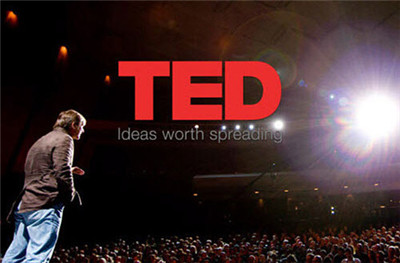
你或许并不知道,西蒙•斯涅克天生腼腆,不喜欢在众人面前讲话。他说参加派对时自己总是独自躲在角落里,甚至不敢在这样的场合出现。通常情况下,他干脆就不去参加派对。如今,他的演讲视频已经获得2,200万次浏览量,这位乐观的人种志学者,由此成为观看次数排名第三的TED演讲者。
Ironic for an introvert, isn’t it? Sinek’s unlikely success as both an inspirational speaker and a bestselling author isn’t just dumb luck. It’s also not being in the right place at the right time or knowing the right people. It’s the result of fears faced and erased, trial and error and tireless practice, on and off stage.
对于一位内向的人来说,这难道不具有讽刺意味吗?然而,不论是作为一名励志演讲家还是畅销书作者,斯涅克的成功并非全靠运气。也不是来自他在正确的时间出现在正确的地点或者认识正确的人。他的成功源自他在台上台下无数次面对恐惧又战胜恐惧,反复试错,不知疲倦的练习。
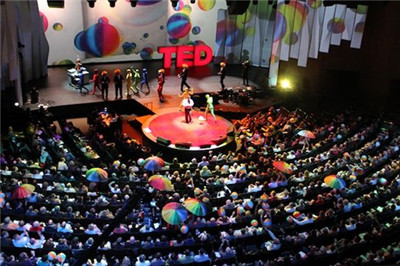
我们采访了斯涅克,询问了他如何学会发表自信的、有魅力的、有意义的演说,以及其他人应该怎么做。以下是他给出的七条秘诀,这将帮助我们学会如何让演讲言之有物,动人心弦。
1. Don’t talk right away.
1. 不要一开场就滔滔不绝。
Sinek says you should never talk as you walk out on stage. “A lot of people start talking right away, and it’s out of nerves,” Sinek says. “That communicates a little bit of insecurity and fear.”
斯涅克表示,你不应该一走上台就开始说话。斯涅克说道:“许多人一上台便开始滔滔不绝,这往往是紧张所致。这种表现传达给听众的是不安全感和恐惧。”
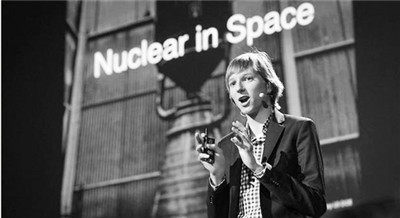
相反,演讲者应该静静地走上讲台。然后深呼吸,找到自己的位置,等几秒钟之后再开始。斯涅克说道:“我知道这听起来很长,而且有些乏味。这样做时,你甚至会感觉到难以忍受的尴尬,但这却可以向听众展示,你非常自信,完全掌控着局面。”
2. Show up to give, not to take.
2. 只为给予,不求索取。
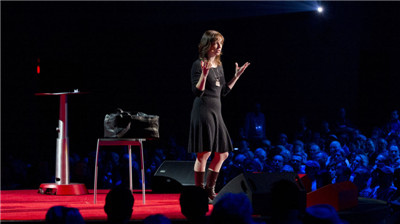
人们进行演示,通常是为了推销产品或服务,让人们在社交媒体上关注他们,买他们的书,或者单纯想博得人们的好感。斯涅克将这类演讲者称为“索取型”,他表示,听众一眼就能看穿这些人的目的。而一旦他们明白了演讲者的意图,他们就失去了聆听的兴趣。
“We are highly social animals,” says Sinek. “Even at a distance on stage, we can tell if you’re a giver or a taker, and people are more likely to trust a giver — a speaker that gives them value, that teaches them something new, that inspires them — than a taker.”
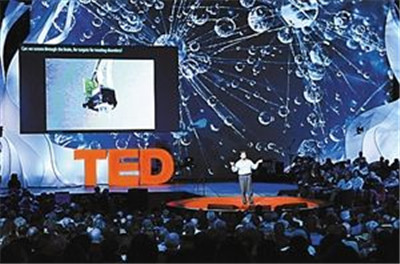
3. Make eye contact with audience members one by one.
3.与听众逐个进行眼神接触。

斯涅克说道,平移扫视是演讲者最大的敌人。“虽然你看上去是在关注所有人,但实际上却切断了你与听众之间的联系。”
It’s much easier and effective, he says, if you directly look at specific audience members throughout your speech. If you can, give each person that you intently look at an entire sentence or thought, without breaking your gaze. When you finish a sentence, move on to another person and keep connecting with individual people until you’re done speaking.
他说道,在演讲过程中直接看向特定的听众,会更加容易也更有效。如果可以的话,在说一整句话或一次思考的过程中,专心看着一个人。说完一句话之后,将目光转移到另外一个人,继续与每一位听众进行交流,直到演讲结束。
“It’s like you’re having a conversation with your audience,” says Sinek. “You’re not speaking at them, you’re speaking with them.”
斯涅克说道:“就好像你在与听众对话。你不是在对他们发表演讲,而是在与他们谈话。”
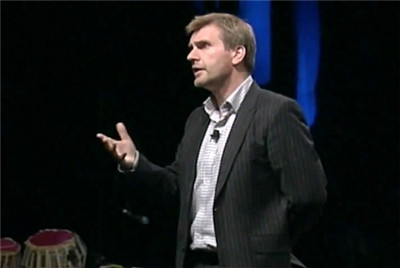
This tactic not only creates a deeper connection with individuals but the entire audience can feel it.
这种策略不仅可以使演讲者与听众个人之间产生更深的联系,而且可以让所有听众都能感觉到这一点。4. Speak unusually slowly.
4. 放慢讲话速度。
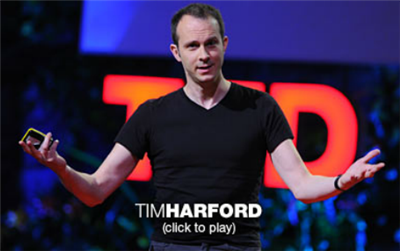
当你紧张的时候,加快的不仅仅是你的心跳。你说话的速度也会加快。斯涅克表示,幸运的是,听众比我们想象的更有耐心,更善解人意。
“They want you to succeed up there, but the more you rush, the more you turn them off,” he says. “If you just go quiet for a moment and take a long, deep breath, they’ll wait for you. It’s kind of amazing.”
他说道:“他们希望你的演讲成功,但你说话的速度越快,就会越让人失望。如果你安静一小会儿,深吸一口气,他们会耐心等你开始。这真是令人惊讶。”

斯涅克认为,演讲时语速太慢是不可能的。“你站在讲台上,以每个字间隔几秒钟的速度说话,而人们还会耐...心...等...你...说...完,这听起来几乎是不可能的。但事实就是这样。”
5. Ignore the naysayers.
5. 忽视反对者。

对于那些皱着眉头、交叉双臂或摇头否定的人,不要放在心上。只关注自己的支持者即可——那些明显沉浸在演讲当中,喜欢你的演讲并且频频点头肯定的人。相比努力说服反对者,如果你发现有听众与你产生了积极的互动,你会更加自信和放松。
6. Turn nervousness into excitement.
6. 化紧张为兴奋。

斯涅克在看奥运会比赛的时候学会了这一点。几年前,他注意到记者在比赛前后采访奥运会选手的时候,问了同样的问题。“你紧张吗?”所有运动员都给出了同样的答案:“不,我很兴奋。”这些选手正在将紧张释放的身体信号——潮湿的双手、砰砰直跳的心脏和紧绷的神经——重新解读成兴奋和愉悦的副作用。
When you’re up on stage you will likely go through the same thing. That’s when Sinek says you should say to yourself out loud, “I’m not nervous, I’m excited!”
当你走上讲台的时候,你可能会有同样的经历。此时,斯涅克认为,你应该大声对自己说:“我不紧张,我很兴奋!”
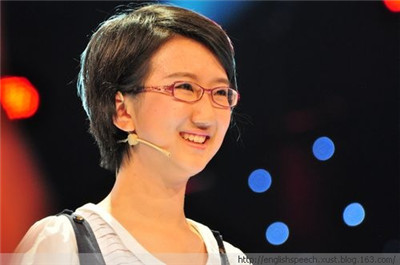
斯涅克说道:“之后你会发现,这真的能产生不可思议的效果,它会帮助你改变心态。”
7. Say thank you when you’re done.
7. 结束时说声谢谢。

Applause is a gift, and when you receive a gift, it’s only right to express how grateful you are for it. This is why Sinek always closes out his presentations with these two simple yet powerful words: thank you.
掌声是听众给你的礼物,而在收到礼物时,你应该表达自己的感激之情。所以,斯涅克总是会以两个虽然简单但极其强大的字作为演讲的结束语:谢谢。
“They gave you their time, and they’re giving you their applause.” Says Sinek. “That’s a gift, and you have to be grateful.”
斯涅克说道:“听众付出了时间,并且赠予你掌声。这便是他们的礼物,你必须报以感激。”
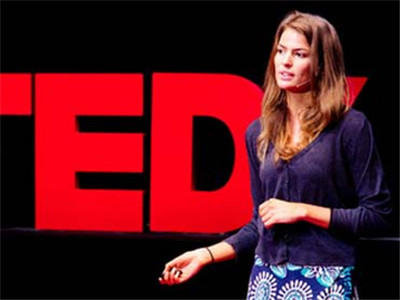
如果想向斯涅克学习更多通过演讲俘获听众的技巧,请在技能分享网站Skillshare上观看他的免费30分钟课程《如何演讲:分享能启发行动的思想》(How to Present: Share Ideas That Inspire Action)。

重点单词

